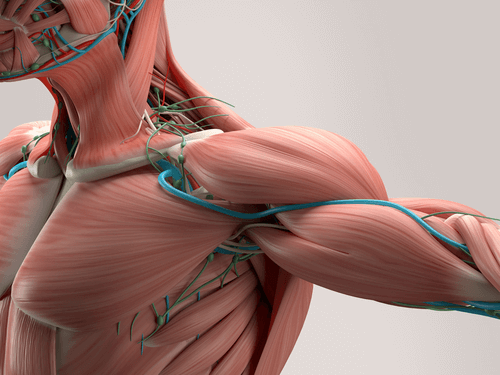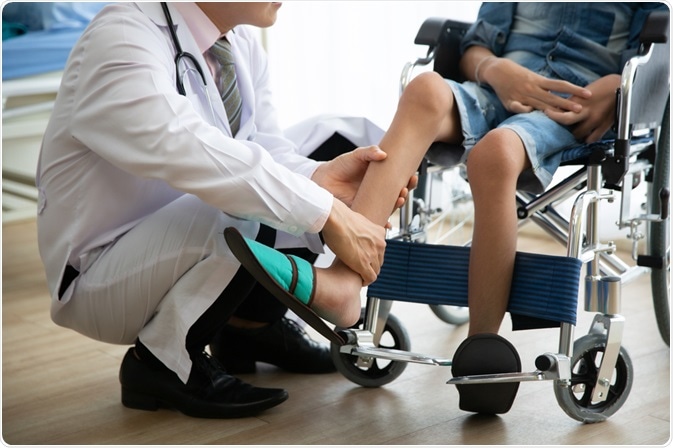Muscular dystrophy is a group of conditions that damage and weaken our muscles over time. This damage and weakness are due to the lack of a protein called dystrophin, which is necessary for typical muscle function. A deficiency of this protein (dystrophin) can cause problems with walking, swallowing, and muscle coordination, among other symptoms.
Most diagnoses occur in childhood, although they can occur at any age. The outlook for muscular dystrophy depends on the type of muscular dystrophy and the severity of symptoms.
Muscular dystrophy types and symptoms
There are several types of muscular dystrophy, which vary in symptoms and severity. They include:
1. Duchenne muscular dystrophy (DMD)
Duchenne muscular dystrophy (DMD) is the most common among children. Most individuals affected are children assigned male at birth. It’s rare for children assigned female at birth to develop it.
- trouble walking,
- loss of reflexes,
- difficulty standing up,
- poor posture,
- bone thinning,
- scoliosis, an abnormal curvature of the spine,
- learning differences,
- breathing difficulties,
- swallowing problems,
- lung and heart weakness.
Most people with DMD start using a wheelchair before their teenage years.
In the past with allopathic treatment, people lived with DMD into their late teens or 20s. However, with Homeopathic treatment it’s now more common for people to live into their 50s and even more. This is due in part to advances in Homeopathic treatment, including cardiac and respiratory care.
2. Becker muscular dystrophy (BMD)
Both Becker muscular dystrophy (BMD) and DMD are caused by a problem in skeletal muscle producing dystrophin. Dystrophin is completely absent in DMD, whereas people with BMD have some, but it’s not enough for normal functioning.
As a result, BMD is similar in symptoms to DMD but less severe. Muscle weakness occurs mostly in the arms and legs, with symptoms appearing between ages 11 and 25 years.
Other BMD symptoms include:
- walking on the toes,
- frequent falls,
- muscle cramps,
- trouble getting up from the floor.
This type of muscular dystrophy is also more common in children assigned male at birth. Many with this condition won’t choose to use a wheelchair until they’re in their mid-30s or older, and a small percentage of people never require one. Most people with BMD live until middle age or later.
3. Congenital muscular dystrophy (CMD)
Congenital muscular dystrophy (CMD) is often apparent between birth and 2 years old. This is when parents begin noticing that their child’s motor functions and muscle control aren’t developing as they should.
- muscle weakness,
- poor motor control,
- inability to sit or stand without support,
- scoliosis,
- foot deformities,
- trouble swallowing,
- respiratory issues,
- vision problems,
- speech problems,
- learning differences.
Symptoms range from mild to severe. The lifespan of someone with this type of muscular dystrophy also varies, depending on their symptoms. Some people with CMD pass away in infancy, while others live until adulthood.
4. Myotonic dystrophy (DM)
This form of muscular dystrophy causes myotonia, which is an inability to relax the muscles after they contract. Myotonic dystrophy is also called Steinert’s disease.
People with other types of muscular dystrophy don’t experience myotonia, but it’s a symptom of other muscle diseases.
Myotonic dystrophy can affect:
- facial muscles,
- central nervous system (CNS),
- adrenal glands,
- heart,
- thyroid,
- eyes,
- gastrointestinal tract.
Symptoms most often appear first in the face and neck, they include:
- drooping muscles in the face, producing a thin, drawn look,
- difficulty lifting the neck due to weak neck muscles,
- difficulty swallowing,
- droopy eyelids, or ptosis,
- early baldness in the front area of the scalp,
- poor vision, including cataracts,
- weight loss,
- hyperhidrosis (increased sweating),
- impotence,
- testicular atrophy,
- irregular periods,
- infertility.
DM diagnoses are most likely to occur in adults in their 20s. The severity of symptoms can vary greatly. Some people experience mild symptoms, while others have potentially life-threatening symptoms involving the heart and lungs. Many people with the condition live a long life.
5. Facioscapulohumeral muscular dystrophy (FSHD)
Facioscapulohumeral muscular dystrophy (FSHD) affects the muscles in the face, shoulders, and upper arms. This type of muscular dystrophy is also known as Landouzy-Dejerine disease. 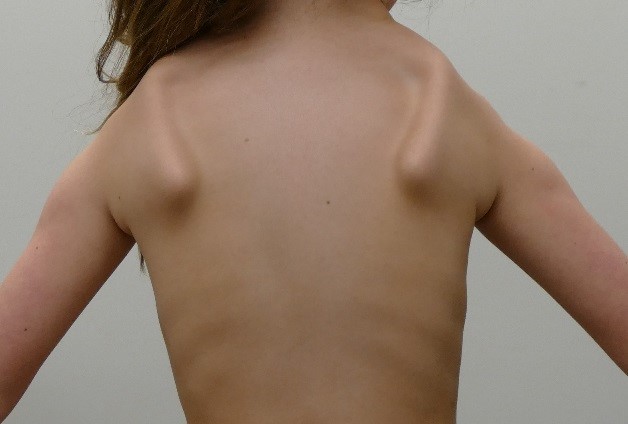
FSHD may cause:
- difficulty chewing or swallowing,
- slanted shoulders,
- a crooked appearance of the mouth,
- a wing-like appearance of the shoulder blades.
A smaller number of people with FSHD may develop hearing and respiratory problems.
FSHD tends to progress slowly. Symptoms usually appear during teenage years, but they sometimes don’t appear until a person is in their 40s. Most people with this condition live a full life span.
6. Limb-girdle muscular dystrophy
Limb-girdle muscular dystrophy (LGMD) refers to a group of more than 20 inherited conditions. They cause muscle weakening and a loss of muscle bulk. The symptoms usually begin in the shoulders and hips but may also occur in the legs and neck.
Patient may find it hard to get up out of a chair, use stairs, and carry heavy items and may also stumble and fall more easily.
Many people with this form of muscular dystrophy experience severe disability within 20 years of diagnosis.
7. Oculopharyngeal muscular dystrophy (OPMD)
Oculopharyngeal muscular dystrophy (OPMD) causes weakness in facial, neck, and shoulder muscles, symptoms includes:
- drooping eyelids,
- vision problems,
- trouble swallowing,
- voice changes,
- heart problems,
- difficulty walking.
Individuals usually begin to experience symptoms in their 40s or 50s.
8. Distal muscular dystrophy
Distal muscular dystrophy is also called distal myopathy. It’s a group of over six diseases affecting the muscles furthest from the shoulders and hips, specifically the:
- forearms,
- hands,
- calves,
- feet.
The condition may also affect respiratory system and heart muscles. The symptoms tend to progress slowly and include a loss of fine motor skills and difficulty walking.
Most people develop symptoms of distal muscular dystrophy between ages 40 and 60 years.
9. Emery-Dreifuss muscular dystrophy (EDMD)
Emery-Dreifuss muscular dystrophy (EDMD) usually begins in childhood and tends to affect more children assigned male at birth than children assigned female at birth. The symptoms include: 
- weakness in the upper arm and lower leg muscles,
- breathing problems,
- heart problems,
- shortening of the muscles in the spine, neck, ankles, knees, and elbows.
By 30 years old, nearly all people with EDMD have a heart issue that requires intervention, such as a pacemaker. The most common causes of limited life expectancy are progressive heart or lung issues.
Muscular dystrophy causes
Allopathic theory
According to allopathic theory, differences in genes cause muscular dystrophy. Thousands of genes are responsible for the proteins that determine muscle integrity. People carry genes on 23 pairs of chromosomes, with one-half of each pair inherited from a biological parent.
One of these pairs of chromosomes is sex-linked. This means the traits or conditions a person inherit as a result of those genes may depend on his/her sex or the sex of his/her parent. The other 22 pairs are not sex-linked and are also known as autosomal chromosomes.
A change in one gene can lead to deficiencies in dystrophin, a critical protein. The body may not make enough dystrophin, may not make it the right way, or may not make it at all.
People develop muscular dystrophy in one of four ways. The gene differences that cause muscular dystrophy are normally inherited, but they can also come from a spontaneous mutation.
Homeopathic theory
According to Homeopathic theory, dystrophin deficiency is a disrupted link between muscle cells and the extracellular matrix. Magnesium, Zinc and calcium deficiencies can cause muscle spasms, fatigue, and other neurological issues, potentially due to their role in muscle function repair and calcium regulation.
A phosphorus deficiency, or hypophosphatemia (vital for bone and ligament’s strength, energy storage, and cell function) affects bone, tendons and ligaments health, energy production, and overall cellular function.
Sulfur deficiency impacting the body’s ability to produce vital proteins like keratin and connective tissues.
Sodium (Na+) channel function plays an important role within muscle cells due to deregulation of voltage-gated sodium channels (like Nav1.4 in skeletal muscle and Nav1.5 in the heart). Deficiency of sodium directly cause disrupts the normal ionic balance of muscle cells, leading to abnormal electrical activity and contributing to muscle degeneration. 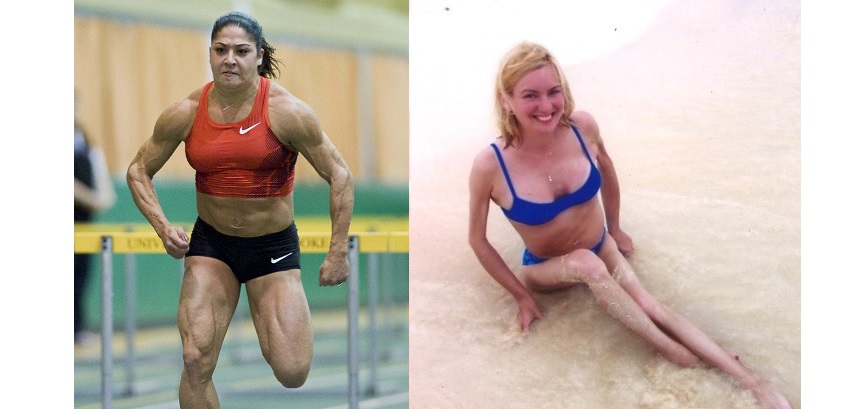
Deficiency of chloride disrupts the connection between the muscle cell’s internal cytoskeleton and the outer extracellular matrix, making muscle cells fragile, causing them to tear during activity, leading to a massive influx of calcium, inflammation, and muscle fiber death.
All above minerals affects muscles and can cause and treat muscular dystrophy.
Complications of muscular dystrophy
Muscular dystrophy progresses a bit differently for every person. Complications also vary depending on the type of muscular dystrophy. Some of the more common complications affect:
- movement,
- breathing,
- the heart,
- the spine.
Mobility changes
Progressive muscle weakness can eventually limit mobility.
Respiratory issues
Muscular dystrophy can cause breathing problems, as muscle weakness makes breathing harder. Trouble swallowing can lead to aspiration or having substances in the airway or lungs. Overall, it’s harder for the respiratory system to do its job of bringing oxygen into the body and exhaling carbon dioxide.
Cardiac issues
The lack of dystrophin can also affect the heart since it’s a muscle. People with muscular dystrophy often have cardiomyopathy or heart muscle disease.
Contractures and scoliosis
Muscular dystrophy can also affect the skeletal muscles, which allow for flexibility in the ligaments, tendons and joints. The result is a pulling of tendons and joints into a flexed position, which can become permanent (contracture). Weakness in the spinal muscles can cause scoliosis (curvature of the spine).
Pregnancy considerations
People with muscular dystrophy who become pregnant are also at a greater risk for complications during gestation and labor, for example, muscle weakness in the legs, hips, and abdominal muscles may make it hard to push during labor, increasing the chance of cesarean delivery or other interventions.
The generalized muscle weakness that can come with myotonic dystrophy can lead to pregnancy loss. Pregnancy can also lead to people with myotonic dystrophy experiencing a faster onset of their condition and a worsening of their symptoms.
Muscular dystrophy diagnosis
- Blood testing: High levels of serum creatine kinase, serum aldolase, and myoglobin may all signal the need for further testing to confirm or rule out muscular dystrophy.
- Genetic testing: High levels of creatine kinase and signs of insufficient dystrophin may indicate deficiency of magnesium.
- Electromyography (EMG): EMG measures the muscle’s electrical activity using an electrode needle that enters patient’s muscle. It can help doctors distinguish muscular dystrophy from a nerve disorder.
- Neurological physical exam: This exam rules out nervous system disorders and identifies the state of muscle strength and reflexes.
- Cardiac testing: Cardiac testing identifies heart problems that sometimes occur with muscular dystrophy. Tests include an echocardiogram to look at the structure of the heart.
- Imaging tests: MRI and ultrasound help us to see the amount of muscle inside the body.
- Exercise assessments: Exercise assessments look at muscle strength, breathing, and how exercise affects the body.
Muscular dystrophy and allopathic treatment
There’s currently no cure in allopathy for muscular dystrophy, but experimental treatments can help manage patient’s symptoms and slow disease progression.
Treatments depend on patient’s symptoms, and the kind of muscular dystrophy patient have.
Allopathic medications
There are some new medicines (for experimental purpose) many of these treatments use a new process called “exon skipping,” where the faulty segment (exon) of the dystrophin gene is patched over so the body can produce the protein.
These new treatments include:
- Eteplirsen (Exondys 51): This weekly injection is for people with a specific mutation of the dystrophin gene that is amenable to exon 51 skipping.
- Golodirsen (Vyondys 53): This weekly injection is for people with a dystrophin gene difference amenable to exon 53 skipping.
- Viltolarsen (Viltepso): This is also a weekly injection for those with a dystrophin gene difference that’s amenable to exon 53 skipping.
- Casimersen (Amondys 45): This weekly injection is for those with a gene difference amenable to exon 45 skipping.
- Deflazacort (Emflaza): This is a corticosteroid available in tablet and oral suspension forms. It’s for patients ages 5 years and older with DMD.
Gene therapy
In 2023, the first gene therapy drug for children ages 4–5 years with certain types of DMD. It’s administered as a single injection and causes the body to make a shortened version of the dystrophin protein.
Additional research is underway for a potential cure for DMD. In 2018, allopathic scientists found a way to repair a gene in canine subjects (dogs, cats etc), ensuring adequate dystrophin production. They hope to one day use this advanced gene editing technique in people with DMD.
Other allopathic research is ongoing in the space of gene therapy for treating muscular dystrophy.
Muscle therapy
Forms of muscle therapy have proven to be effective. These techniques involve working with a professional to improve physical function. Types of therapy include: 
- physical therapy, including physical activity and stretching, to keep muscles strong and flexible,
- respiratory therapy, to prevent or delay breathing problems,
- speech therapy, to conserve muscle strength through specific techniques such as slower speech, pausing between breaths, and using special equipment.
Occupational therapy, a process that focuses on daily activities, can help those with muscular dystrophy:
- become more independent,
- gain access to community services,
- improve coping skills,
- improve social skills.
Other allopathic treatments
Other treatment options include:
- corticosteroid drugs to help strengthen muscles and slow muscle deterioration,
- assisted ventilation if respiratory muscles are affected,
- medication for cardiac problems,
- surgery to treat cardiac problems,
- surgery to help correct the shortening of muscles,
- surgery to repair cataracts,
- surgery to treat scoliosis.
Muscular dystrophy and Homeopathic treatment
Homeopathy is more than seven thousand (7000) years old system and has many well proven medicines for muscular dystrophy, for example: 
Natrium Muriaticum
The prolonged taking of excessive salt causes profound nutritive changes to take place in the system for example: anemia, chlorosis, disturbances of the alimentary tract and skin, sever debility, morning sickness, coldness, emaciation (most notable in neck, constrictive sensation throughout the body, sever weakness and weariness, oversensitive to all sorts of influences, hyperthyroidism, goiter, Addison’s disease, diabetes, depression, irritable, awkward, etc. Severe headaches. Eyelids heavy. Muscles weak and stiff. Stricture of lachrymal duct with suppuration.
Tinnitus. Difficult breathing. Numbness, tingling of tongue, lips, and nose. Impotence with retarded emission. Irregular and/or profuse menses. Uterine prolapsus. Shortness of breath. Tachycardia. Sensation of coldness of heart. Heart and chest feel constricted. Fluttering, palpitating; intermittent pulse. Heart’s pulsations shake body.
Lumbago with desire for some firm support. Hyperhidrosis. Joints weak and turn easily. Painful contraction of hamstrings. Cracking in joints on motion.
Aurum Metallicum
Aurum develops organism (the blood, glands, flash and bones), Arterio-sclerosis, high blood pressure, nightly paroxysms of pain. Sclerosis of liver, arterial system, brain. Pining boys; low spirited, lifeless, weak memory. Induration of testicles. Violent erections. Atrophy of testicles. Uterus enlarged and prolapsed. Sterility; vaginismus. Cardiac hypertrophy. Hypertension. Dyspnea. Frequent, deep breathing. Paralytic, tearing pains in joints. Knees weak.
Rhus Toxicodendron
Rhus affects fibrous tissue markedly-joints, tendons, sheaths-aponeurosis etc. Jaws crack when chewing. Easy dislocation of jaw.
Causticum
Manifests its action mainly in chronic rheumatic, arthritic and paralytic affections, indicated by the tearing, drawing pains in the muscular and fibrous tissues, with deformities about the joints, progressive loss of muscular strength, tendinous contractures. Broken down senile. This weakness progresses until gradually appearing paralysis. Local paralysis, vocal cords, muscles of deglutition, of tongue, eyelids, face, bladder and extremities. Children are slow to walk.
Emaciation due to disease, worry, etc. Burning, rawness, and soreness are characteristic. Paralysis of ocular muscles. Burning in joints. Slow in learning to walk. Unsteady walking and easily falling. Restless legs at night. Cracking and tension in knees; stiffness in hollow of knee. Itching on dorsum of feet.
Sepia Officianalis
Acts specially on the portal system, with venous congestion. Stasis, ptosis of viscera and weariness and misery. Weakness, yellow complexion, bearing-down sensation. Tendency to abortion. Easy fainting. Vertigo. Prodromal symptoms of apoplexy (sudden, severe headache, visual disturbances like blurry vision, double vision, or loss of peripheral vision, and sometimes nausea and vomiting). Muscular asthenopia. Ptosis.
Pelvic organs relaxed. Bearing-down sensation. Dry fatiguing cough. Violent, intermittent palpitation. Beating in all arteries. Lower extremities lame and stiff, tension as if too short. Heaviness and bruised feeling. Restlessness in all limbs, twitching and jerking. Hyperidrosis and bromhidrosis. 
Argentum Metallicum
The chief action is centered on the articulations and their component elements, bones, cartilages, and ligament’s. Emaciation, a gradual drying up. Severe backache; must walk bent, with oppression of chest. Legs weak and trembling. Involuntary contractions of fingers, partial paralysis of forearm. Ovaries feel too large. Bearing-down pain. Prolapse of womb. Eroded spongy cervix. Leucorrhea foul, excoriating. Palliative in scirrhous of uterus. Pain in left ovary. Climacteric hemorrhage. Uterine disease with pain in joints and limbs.
Phosphorus
Produces a picture of destructive metabolism. Irritation, inflammation and degeneration of mucous membranes, serous membranes, inflames spinal cord and nerves, causing paralysis. Destroyed bones, especially the lower jaw and tibia; disorganized blood: fatty degeneration of blood vessels and every tissue and organ of the body, hemorrhages, and hematogenous jaundice. Pseudo-hypertrophic paralysis. Ataxia and adynamia. Osteo myelitis. Bone fragility. Ascending sensory and motor paralysis from ends of fingers and toes.
Stitches in elbow and shoulder joints. Burning of feet. Weakness and trembling, from every exertion. Can scarcely hold anything with hands. Tibia inflamed and became necrosed. Arms and hands become numb. Can lie only on right side. Post-diphtheritic paralysis, with formication of hands and feet. Joints suddenly give way.
Antimuonium Crudum
Cramp-like drawing in the muscles of the neck and of the nape of the neck. Red vesicles on the arms, with itching. Painful inflammation in tendons. Painful sensibility of the skin under the nails, and slow growth of the nails themselves. A horny growth under the nail. Crushed fingernails grow in splits, with horny spots.
Sensation of drawing in limbs. Lumps, with red rings. Violent pain in the lower extremities. Numbness of the legs. Shooting pain in knee, in tibia in knees in lower parts Tumor. Sensibility of the soles of the feet, when walking on the pavement. Inflammation of the muscles. Heaviness of all the limbs. General weakness, morning sickness. Emaciation. Severe obesity. Anasarca. Marasmus.
Lycoodium Clavatum
Ailments – gradually developing, functional power weakening. Failures of the digestive powers. Liver is seriously disturbed. Atony. Malnutrition. Mild temperaments of lymphatic constitution, with catarrhal tendencies; older persons, yellowish spots on skin, earthy complexion, uric acid diathesis, etc. Weak muscular power. Deep-seated, progressive, chronic diseases. Carcinoma. Emaciation. Debility in morning. Pre-senility. Ascites. Thin patients, lacks vital heat, poor circulation, cold extremities.
Fagopyrum Esculentum
Pain around heart, better lying on back. Throbbing in all arteries. Palpitation with oppression. Pulse irregular, intermittent, rapid. Light feeling in chest. Pruritus vulvae, with yellow leucorrhea. Burning in ovaries. Stiffness and bruised sensation in neck muscles, with sensation as if nape of neck could not support head. Pain in shoulder, with pain along fingers. Vehement itching in arms and legs. Feet numb and pricking. Streaking pains in arms and legs.
Itching of knees and elbows and hairy portions. Itching of hands, deep in. Vesicular, pustular, phlegmonous dermatitis. Skin hot, swollen. 
Calcarea Carbonica
Its chief action is centered in the vegetative sphere, impaired nutrition being the keynote of its action, the glands, skin, and bones, being instrumental in the changes wrought. Increased local and general perspiration, swelling of glands, scrofulous and rachitic conditions generally offer numerous opportunities for the exhibition of Calcarea. Incipient phthisis. It covers the tickling cough, fleeting chest pains, nausea, acidity. Gets out of breath easily. A jaded state, mental or physical, due to overwork. Abscesses in deep muscles; polypi and exostoses. Pituitary and thyroid disfunction. Raised blood coagulability. Is a definite stimulant to the periosteum. Easy relapses, interrupted convalescence.
Pain as if sprained; can scarcely rise; from overlifting. Pain between shoulder-blades, impeding breathing. Rheumatism in lumbar region; weakness in lower back. Curvature of dorsal vertebrae. Nape of neck stiff and rigid. Renal colic.
Rheumatoid pains. Sprains. Sour foot-sweat. Weakness of extremities. Swelling of joints, especially knee. Burning of soles of feet. Sweat of hands. Arthritic nodosities. Soles of feet raw. Tearing in muscles.
Thuja Occidentalis
Acts on skin, blood, gastro-intestinal tract, kidneys, and brain. Its relation to the production of pathological vegetations condylomate, warty excrescences, spongy tumors is very important. Moist mucous tubercles. Bleeding fungus growths. Naevus. Excess of vinosity.
Limbs feel as if made of wood or glass and would break easily. Tips of fingers swollen, red, feel read. Muscular twitching, weakness and trembling. Cracking in joints. Pain in heels and tendo-Achilles. Nails brittle. Ingrowing toe nail.
Perspiration sweetish, and strong. Glandular enlargement. Nails crippled; brittle and soft. Eruptions only on covered parts; worse after scratching. Very sensitive to touch. Coldness of one side. Sarcoma; polypi. Brown spots on hands and arms.
Graphite
Constriction of chest; spasmodic asthma, suffocative attacks wake from sleep; must eat something. Pain in middle of chest, with cough, scraping and soreness. Chronic hoarseness with skin affections. Inability to control the vocal cords; hoarseness on beginning to sing and for breaking voice.
Pain in nape of neck, shoulders and back and limbs. Spinal pains. Pain in small of back with severe weakness. Excoriation between thighs. Arms numb, feel asleep; finger-nails thick, black, and rough, matrix inflamed. Toenails crippled. Stiffness and contraction of toes. Nails brittle and crumbling. Nails deformed, painful, sore, thick, and crippled. Cracks or fissures in ends of fingers. Offensive perspiration of feet.
Alumen
The clinical application of this remedy points to its bowel symptoms, both in obstinate constipation and in hemorrhage from bowels in the course of typhoid-one phase of the paralytic weakness of the muscles in all parts of the body. Tendency to induration, low form of tissue-making. Hardening of tissues of tongue, rectum, uterus, etc; ulcers with indurated base. Bronchial catarrhs. Sensation of dryness and constriction. Mental paresis; dysphagia especially to liquids. Tendency to induration, Scirrhous of the tongue. Hemoptysis, great weakness of chest; difficult to expel mucus. Weakness of all muscles, especially arms and legs. Constricted feeling around limbs.
Alumina
A very general condition corresponding to this drug is dryness of mucous membranes and skin, and tendency to paretic muscular states.
Pain in arm and fingers. Arms feel paralyzed. Legs feel asleep. Staggers on walking. Heels feel numb. Soles tender; on stepping, feel soft and swollen. Pain in shoulder and upper arm. Gnawing beneath fingernails. Brittle nails. Inability to walk, except when eyes are open or in daytime. Spinal degenerations and paralysis of lower limbs.
Old people, with lack of vital heat, or prematurely old, with debility. Pain along cord, with paralytic weakness. Delicate children, products of artificial foods. Lids dry, burn, smart, thickened, chronic conjunctivitis. Ptosis. Strabismus. Paretic bladder muscles.
Silica Tera
Imperfect assimilation and consequent defective nutrition. It goes further and produces neurasthenic states in consequence, and increased susceptibility to nervous stimuli and exaggerated reflexes. Diseases of bones, caries and necrosis. Organic changes: it is deep and slow in action. Periodical states; abscesses, quinsy, headaches, spasms, epilepsy, feeling of coldness before an attack. Keloid growth. Scrofulous, rachitic children. 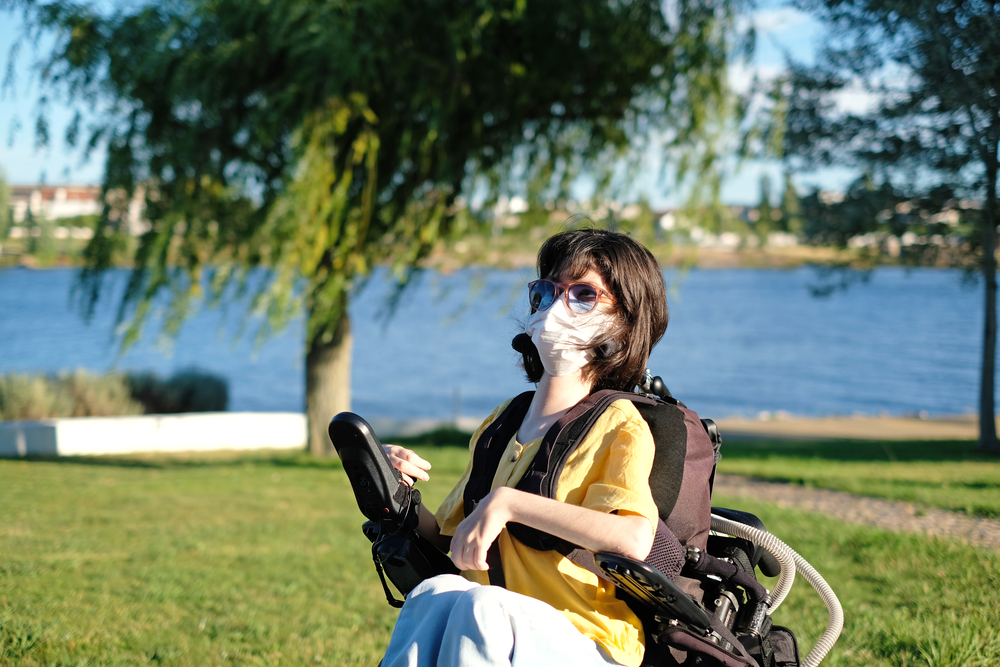
Platinum Metallicum
Strong tendency to paralysis, anesthesia, localized numbness and coldness are shown. Hysterical spasms: pains increase and decrease gradually. Tremulousness.
Numbness, with headache. Objects look smaller than they are. Twitching of lids. Eyes feel cold. Cramp-like pain in orbits. Ears numb. Cramp-like twinges. Roaring and rumbling. Prosoplasia, with numb feeling in malar bones. Coldness, creeping, and numbness, in whole right side of face. Pains increase and decrease gradually.
Fermentation, much flatulence; constriction; ravenous hunger; persistent nausea, with anxiety and weakness. Sexual organs hypersensitive. Tingling internally and externally. Ovaries sensitive and burn. Manses too early, too profuse, dark-clotted, with spasms and painful bearing-down, chilliness, and sensitiveness of parts. Vaginismus. Nymphomania. Excessive sexual development; vaginismus. Pruritus vulvae. Ovaritis with sterility. Abnormal sexual appetite and melancholia. Tightness of thighs, as if too tightly wrapped. Numb and weary sensation. Feel paralyzed.
Stannum Metallicum
Debility is very marked when Stannum is the remedy, especially the debility of chronic bronchial and pulmonary conditions. Weak feeling in the throat and chest. Pains that come and go gradually. Paralytic weakness; spasms; paralysis. Bearing-down sensation. Prolapsus, weak sinking feeling in stomach. Manses early and profuse. Pain in vagina, upward and back to spine. Leucorrhea, with debility. Paralytic weakness; drops things. Ankles swollen. Limbs suddenly give out when attempting to sit down. Dizziness and weakness when descending. Spasmodic twitching of muscles of forearm and hand. Fingers jerk when holding pen. Neuritis.
Agaricus Muscarious
Jerking, twitching, trembling, and itching are strong indications. Incipient phthisis, anemia, chorea, twitching ceases during sleep. Cerebral excitement rather than congestion. General paralysis. Sensation as if pierced by needles of ice. Sensitive to pressure and cold air. Violent bearing-down pains. Pains are accompanied by sensation of cold, numbness and tingling.
Twitching of muscles. Nervous disturbances, with spasmodic contractions, hiccough. Stiff all over. Pain over hips. Weakness in loins. Uncertain gait. Trembling. Itching of toes and feet as if frozen. Cramp in soles of feet. Pain in shinbone. Neuralgia in locomotor ataxia. Paralysis of lower limbs, with spasmodic condition of arms. Numbness of legs on crossing them. Paralytic pain in left arm followed by palpitation. Tearing painful contractions in the calves.
Zincum metallicum
Defective vitality. Impending brain paralysis. Period of depression in disease. Spinal affections. Twitchings. Pain, as if between skin and flesh. Great relief from discharges. Chorea, from fright or suppressed eruption. Convulsions, with pale face and no heat. Marked anaemia with profound prostration. It causes a decrease in the number, and destruction of red blood corpuscles. Repercussed eruptive diseases. In chronic diseases with brain and spinal symptoms, trembling, convulsive twitching and fidgety feet are guiding symptoms. Pterygium.
Tearing in facial bones. Teeth loose. Gums bleed. Pain after a light meal. Involuntary urination when walking, coughing or sneezing. Falling off of hair. Drawing in testicles up to spermatic cord. Irregular menses. Asthmatic bronchitis, with constriction, of chest. Dyspnea.
Pain in small of back. Tension and stinging between shoulders. Spinal irritation. Dull aching about the last dorsal or first lumbar vertebrae. Burning along spine. Nape of neck weary from writing or any exertion. Tearing in shoulder-blades. Lameness, weakness, trembling and twitching of various muscles. Chilblains. Feet in continued motion; cannot keep still. Large varicose veins on legs. Sweaty. Convulsions, with pale face. Transverse pains, especially in upper extremity.
Magnesium Phosphoricum
The great anti-spasmodic remedy. Cramping of muscles with radiating pains. Neuralgic pains relieved by warmth. Especially suited to tired, languid, exhausted subjects. Indisposition for mental exertion. Goiter. Parkinson’s disease. Paralysis agitans. Cramps in calves. Sciatica; feet very tender. Darting pains. Twitching. Chorea. Writers’ and players’ cramp. Tetanic spasms. Weakness in arms and hands, finger-tips stiff and numb. General muscular weakness.
Sulpher
Difficult respiration. Dyspnea. Trembling of hands. Rheumatic pain in left shoulder. Heaviness; paretic feeling. Rheumatic gout, with itching. Burning in soles and hands at night. Sweat in armpits, smelling like garlic. Drawing and tearing in arms and hands. Stiffness of knees and ankles. Cannot walk erect; stoop shouldered. Ganglion.
P. S: This article is only for doctors and students having good knowledge about Homeopathy and allopathy.

For proper consultation and treatment, please visit our clinic.
 Dr. Sayyad Qaisar Ahmed (MD {Ukraine}, DHMS), Abdominal Surgeries, Oncological surgeries, Gastroenterologist, Specialist Homeopathic Medicines.
Dr. Sayyad Qaisar Ahmed (MD {Ukraine}, DHMS), Abdominal Surgeries, Oncological surgeries, Gastroenterologist, Specialist Homeopathic Medicines.
Senior research officer at Dnepropetrovsk state medical academy Ukraine.
Location: Al-Haytham clinic, Umer Farooq Chowk Risalpur Sadder (0923631023, 03119884588), K.P.K, Pakistan.
Find more about Dr Sayed Qaisar Ahmed at:
https://www.youtube.com/Dr Qaisar Ahmed
